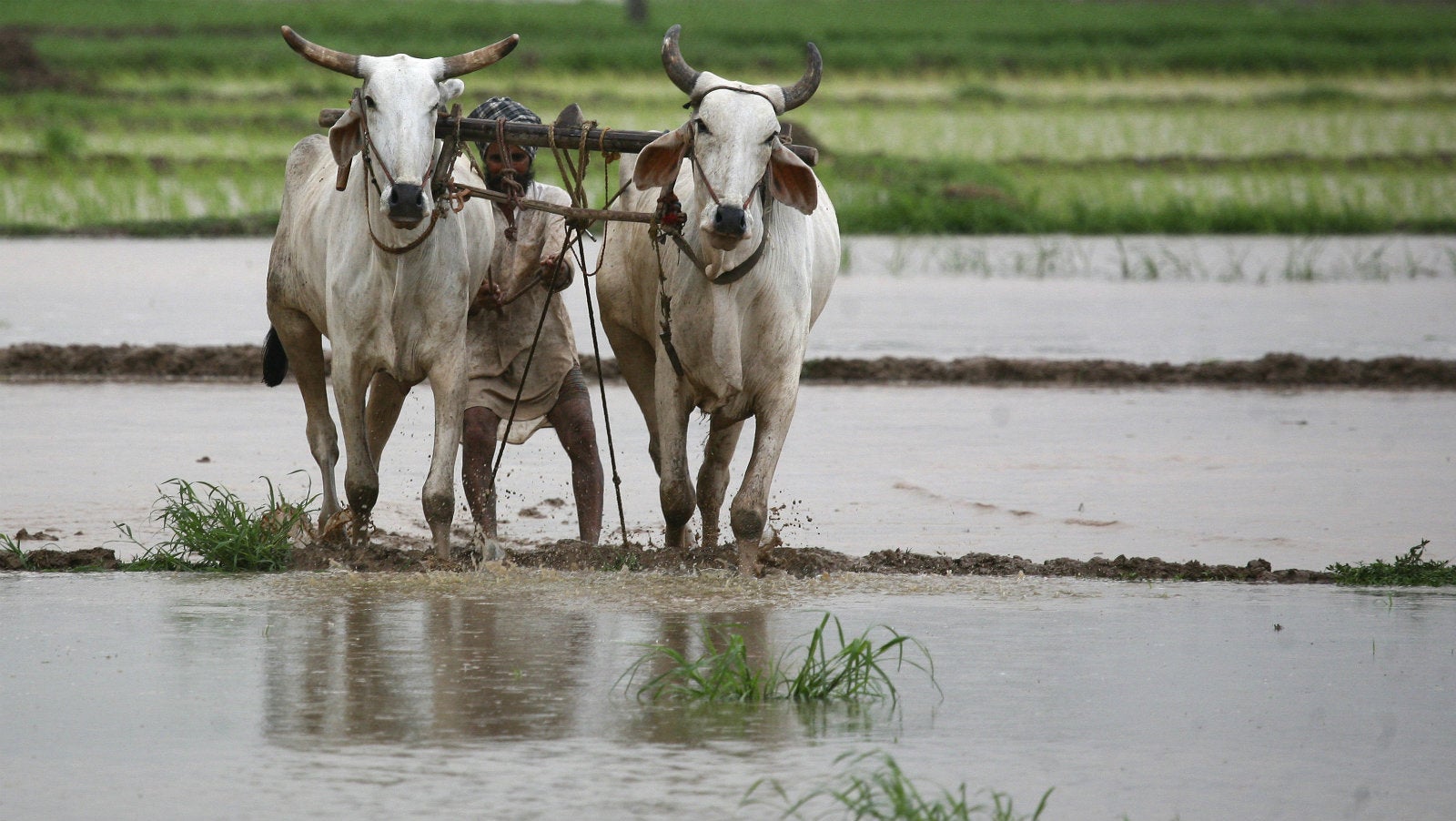The best monsoon rains in three years could boost India’s GDP by $22 billion
Rural incomes in Asia’s third-largest economy are set to increase after the best monsoon season in three years finally washed away the woes of many Indian farmers.


Rural incomes in Asia’s third-largest economy are set to increase after the best monsoon season in three years finally washed away the woes of many Indian farmers.
Good rains have raised farm output and pushed incomes higher, potentially increasing agricultural GDP by Rs1.49 lakh crore ($22 billion) in fiscal 2016-17, according to credit ratings agency Crisil. Agriculture contributed 16% to India’s GDP in 2014-2015, making it one of the largest components. In the second quarter of the 2016 fiscal, India’s agriculture GDP stood at Rs3.74 lakh crore ($56 billion.)
“The distribution of monsoon this season has been the best in the last three years, with only a third of the districts seeing deficiency compared, with almost half in fiscal 2015 and 46% in 2014,” Crisil said in the report released on Oct. 02. Many of the districts with deficient rains are either not important agriculturally or are well-irrigated, the report said.
Indian farmers depend on monsoon rains for annual sowing—60% of the country’s total cropped area is rain-fed. While irrigation facilities do help when rainfall is low, they are often expensive and don’t always provide enough water.
But failed monsoons in the past few years have left several parts of the country drought-hit, shrinking output and income, and consequently demand, too. After all, up to 70% of Indians live in rural areas; of this, over 58% depend on agriculture as their primary source of income. Private consumption—a key driver of India’s GDP—has been weak in rural areas because of droughts. Rural markets account for 54% of the country’s total private consumption, according to Crisil.
Crisil estimates that total Indian private consumption will inch above 8% in fiscal 2017 compared to 7.4% in 2016. This rise will be driven by the rural push, along with thriving urban demand fuelled by low inflation and interest rates.
“The indicators (in rural areas) reveal green shoots and the recovery is likely to gain strength in the coming months. Therefore, we believe the recovery in consumption will be two-legged this time around,” the report said.
Weak consumer demand in rural areas also took a toll on most fast-moving consumer goods firms. For instance, in July, Hindustan Unilever reported a 4% quarterly growth in volumes, compared to 6% a year ago, because of the rural slowdown.
Now, with the rain gods having blessed the hinterland, the dark clouds of slow growth are finally set to dissipate.